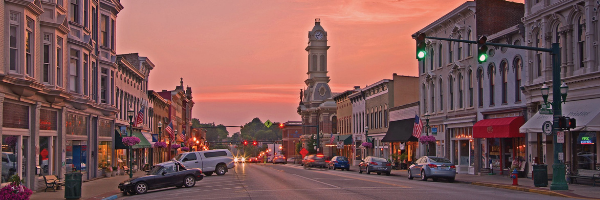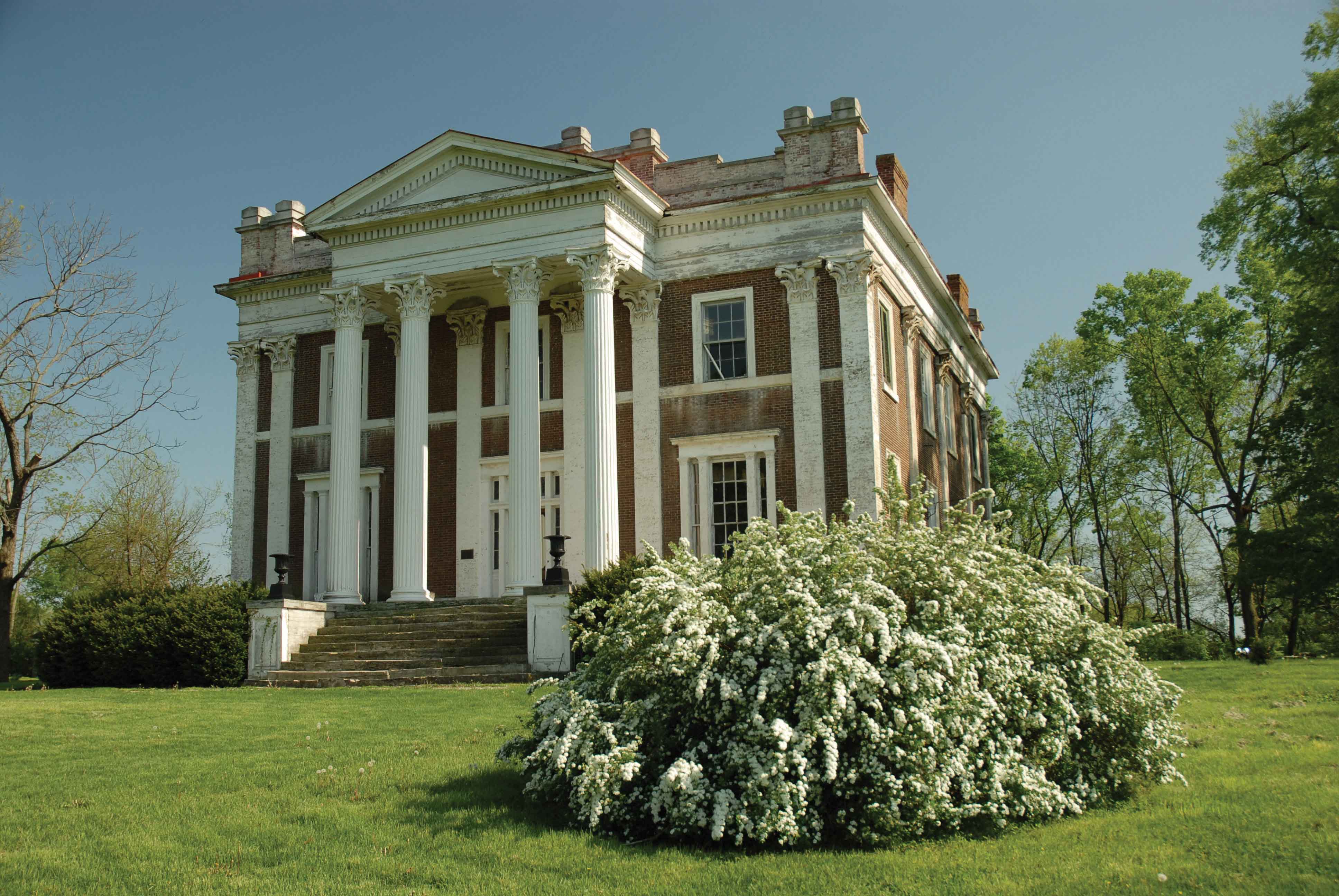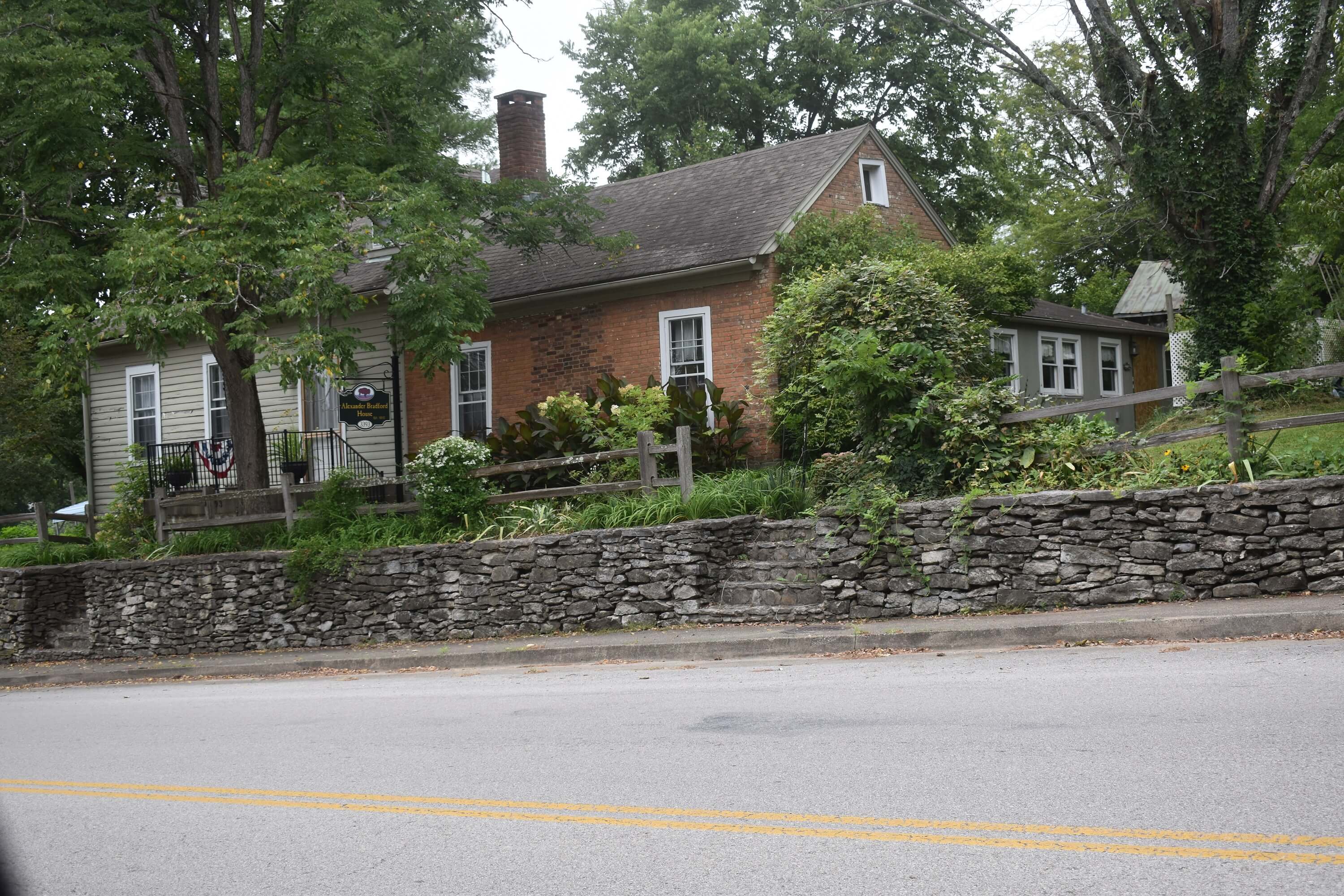
If these buildings could talk....
Written by Kathy Witt
Listen closely.
If Georgetown’s buildings could talk, they would tell you about. . .
. . .a house built on land that belonged to the Warrendale School Company, whose historic buildings served several purposes, including as the home of Thornton F. Johnson’s Western Military Institute, Warrendale Female Institute and Confederate Soldiers Home and Widows’ and Orphans’ Asylum. The Willa V. Rankin House is now known as the House on Main, a fully and beautifully renovated Airbnb rental.
. . .a brick house, one of the very first built in Stamping Ground in the early 1800s, which somehow withstood a tornado a century and a half later to become the sole surviving structure of the original town. The Alexander Bradford House, named for one of the original trustees of Stamping Ground, was once operated as a tavern and is today on the National Register of Historic Places.
. . .a house built by Junius Ward in 1856 for $50,000 (when large homes could be constructed for $5,000) and then sold at auction by a bankrupt Ward 11 years later – with an Alabama gent paying less than $40,000 for the house and 300 acres. Ward Hall, a Georgetown treasure and Kentucky’s grandest Greek Revival-style home, was once offered to the Kentucky Legislature to be used as the capitol. Today it is open for tours by appointment.
Georgetown’s historic buildings have much to say. And Scott County historian Ann Bolton Bevins has listened very closely over the years.
 Ann is the author of the highly successful A History of Scott County As Told by Selected Buildings, a book originally published in 1981 and which has had three reprints.
Ann is the author of the highly successful A History of Scott County As Told by Selected Buildings, a book originally published in 1981 and which has had three reprints.
“The buildings selected themselves,” said Ann of the book’s 349 featured historic structures, a timeline of construction design, from log houses to early twentieth century styles, which provides a pictorial history of area development.
The book was a result of Ann’s thorough research in conducting the Scott County Historic Buildings Survey for the Kentucky Heritage Council (KHC). According to the KHC, the National Historic Preservation Act of 1966 “requires states and territories across the nation to establish this record . . . to conduct a comprehensive statewide survey of historic properties and maintain inventories of such properties” as a tool in selecting nominations to the National Register of Historic Places.
At the top of Ann’s list of chatty buildings is the Thomas W. Hawkins house. The book is well worth borrowing from the library to read along as Ann lays out the intricate, oftentimes perplexing but always intriguing Hawkins family tree – which includes a branch connecting it the Rev. Elijah Craig, a key figure in Georgetown for his role in bourbon – and the home’s own lineage. This intersects with the hemp industry, Georgetown College, a family graveyard, a men’s dormitory and a place of refuge for young ladies when the Georgetown Female Seminary burned in 1865.
Ann’s research for A History of Scott County As Told by Selected Buildings paved the way for Georgetown’s Historic Downtown Walking Tour, “Walk Through Time,” published by Georgetown/Scott County Tourism and available for downloading here. The two-mile Main Street stroll also dips into sides streets as the tour travels back to 1774 and the Historic Scott County Jail.
As you might expect, these buildings are as gabby as the ones in Ann’s book, revealing stories of a. . .
. . .Romanesque-style structure at 117 N. Water Street that held Caleb Powers, the Kentucky Secretary of State charged with the 1903 murder of Gov. William Goebel, when it was a jail and now, as the Royal Spring Welcome Center, houses visitor information and an exhibit on the old jail.
. . .Federal-style house at 355 E. Main Street, home of a little girl in the 1830s who would grow up to raise eyebrows and leave a trail of mouths agape with her audaciously scandalous behavior. That was young Sallie Ward, niece of the aforementioned (and financially ruined) Junius Ward.
. . .Louisiana plantation-style home at 414 East Main Street that is connected to the Kentucky Derby and houses a ghost that appears only to women.
Take the walking tour and listen to these stories and others. You’ll glean an earful about the early history of Georgetown.
Still curious? Borrow a copy of Ann Bolton Bevins’ A History of Scott County As Told by Selected Buildings from the Scott County Public Library. Another book written by Ann is Georgetown and Scott County, published in 1998 by Arcadia Publishing Library Editions. Additionally, Ann’s four-volume rural architectural study, Real Country I, II, III and IV, will soon be released.
Author: Kathryn Witt
Kathryn Witt is an award-winning travel and lifestyle writer, syndicated columnist and author of several books, including Secret Cincinnati, The Secret of the Belles and Atlanta Georgia: A Photographic Portrait. A member of SATW, Authors Guild and the Society of Children’s Books & Illustrators, she lives in northern Kentucky.




